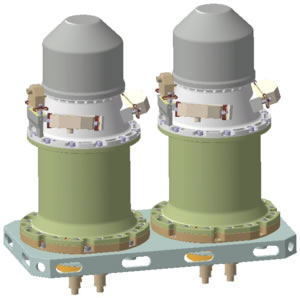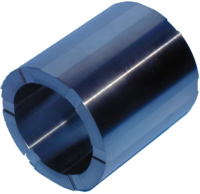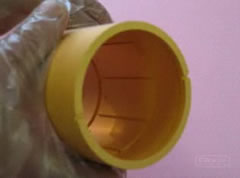Einstein and the accelerometer
Which instrument is able to measure data for climatology, analyze the forces exercised on an orbiting satellite and test Einstein’s theories of relativity? It is called an accelerometer, a tool developed more than twenty years ago, and which today is capable of an incredible degree of accuracy.
Number 13
copyright © CNES 2003 |
Next year we will be celebrating the centenary of Albert Einstein's theories of relativity, revolutionizing the physics of the twentieth century. And yet, one hundred years later, we are still testing the validity of the principles, in order, maybe, to find weaknesses in his theories. The basis of the theory of relativity is the principle of equivalence, which postulates that inertial mass (measuring the inertia of a body, its resistance to movement) and gravitational mass (the experience of gravity, in particular, of the Earth) are one and the same. |
|
For the moment, the answer is yes: the best experiments have verified the principle of equivalence to within an accuracy of 1 to a thousand billion. But this is still insufficient, as some current theories envisage new very weak interactions, the effect of which can be detected only with great difficulty. This is why accelerometers, which measure the acceleration of a moving body, have to become still more accurate, and scientists at Onera are working on it.
The accelerometer is composed of a “test mass”, an object of precisely known mass and form, that is lifted in a ceramic cage by applying electrostatic forces. This cage is at some tens, or even hundreds, of micrometers from the mass. Each acceleration, whether due to gravity or the movement of the instrument, makes the mass move inside the cage. By measuring the electrostatic forces necessary to keep it immobile when lifted, the acceleration experienced can be deduced with a precision of a billionth of Earth’s gravity, or even better. “Instruments like these cannot be used on the Earth and are intended for measurements in outer space” explains Pierre Toubou, director of Onera’s Measurement Physics department. |
|
|
|
Finally, the most ambitious mission has the goal of verifying Einstein's equivalence principle. Microscope – this is its name – is a CNES (Centre national d 'études spatiales) project, planned for March 2008. “Microscope is to verify the principle of equivalence with a precision that is a thousand times greater than that possible today” explains Pierre Touboul, scientific leader of the project. For this, the satellite is going to carry two accelerometers each with two masses, one contained inside the other. The first carries masses made of titanium and platinum, while in the second the masses are both made of platinum and are to used to verify the absence of parasite signals. In the first accelerometer the two masses, platinum and titanium, will be subjected to the same gravitational field. If they react differently, this will mean that the principle of equivalence is violated. The extreme precision of these instruments requires precautions of draconian proportions: a thermal stability of the accelerometer to the nearest millikelvin, the elimination of parasite vibrations, magnetic shielding, the presence of electric thrusters to compensate the surface forces of the satellite. The movement of the masses needs to be detected with a resolution that corresponds to a tenth of the radius of an atom nucleus. |
|
Cécile Michaut, scientific reporter. |
|


